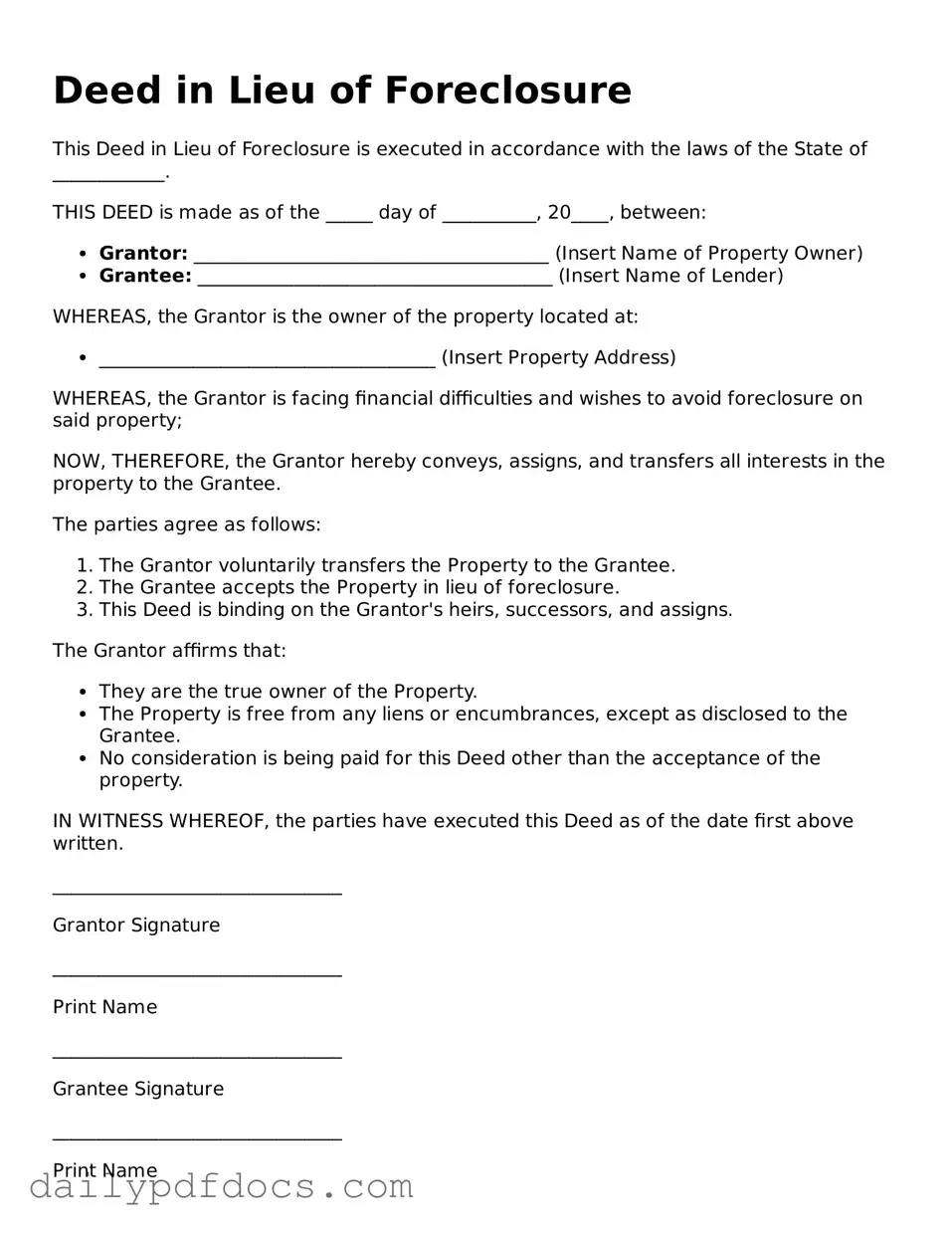Deed in Lieu of Foreclosure
This Deed in Lieu of Foreclosure is executed in accordance with the laws of the State of ____________.
THIS DEED is made as of the _____ day of __________, 20____, between:
- Grantor: ______________________________________ (Insert Name of Property Owner)
- Grantee: ______________________________________ (Insert Name of Lender)
WHEREAS, the Grantor is the owner of the property located at:
- ____________________________________ (Insert Property Address)
WHEREAS, the Grantor is facing financial difficulties and wishes to avoid foreclosure on said property;
NOW, THEREFORE, the Grantor hereby conveys, assigns, and transfers all interests in the property to the Grantee.
The parties agree as follows:
- The Grantor voluntarily transfers the Property to the Grantee.
- The Grantee accepts the Property in lieu of foreclosure.
- This Deed is binding on the Grantor's heirs, successors, and assigns.
The Grantor affirms that:
- They are the true owner of the Property.
- The Property is free from any liens or encumbrances, except as disclosed to the Grantee.
- No consideration is being paid for this Deed other than the acceptance of the property.
IN WITNESS WHEREOF, the parties have executed this Deed as of the date first above written.
_______________________________
Grantor Signature
_______________________________
Print Name
_______________________________
Grantee Signature
_______________________________
Print Name
STATE OF ____________
COUNTY OF _______________
On this _____ day of ___________, 20____, before me, a Notary Public, personally appeared _____________ (Grantor's Name) and _____________ (Grantee's Name) to me known to be the persons described in and who executed this Deed and acknowledged that they executed the same freely and voluntarily for the purposes herein expressed.
_______________________________
Notary Public
My Commission Expires: ____________
